Some photography terms can make you scratch your head. You might even wish for a Photography to English dictionary. We figured it’s our job to shed some light on all this.
So let’s look at some of the most popular photography terms, and what they mean. Fair warning, there’s a lot of them.

Lenses
Aperture
It’s an iris mechanism, which controls the amount of light that gets through the lens. It also affects the depth of field.
The relative size of the aperture is described by the f-number.
The f-number (or f-stop) is the ratio of the diameter of the hole of the aperture and the focal length. We write it as “f/” followed by a number (for example, f/2.8). As the number decreases, the aperture physically gets wider. More light passes and the depth of field gets shallower.
Generally, lower f-numbers mean better low-light capacity. This is why lenses with lower f-numbers are more expensive.

Focal Length
Lenses have a point where light rays converge and we call it the focal point. The distance between the principal plane of a lens and the focal point is the focal length.
This number is expressed in mm and written on the outside of the lens. A 35mm lens has a distance of 3.5cm between the focal point and the principal plane of the lens.
It determines the angle of view and magnification in photography. This is one of the main parameters which marks and groups the lenses.
This number is magnified when using a cropped sensor. For more information on this, see our Full Frame vs Crop Sensor article.

Zoom Lens
There are two different kinds of lenses. A zoom and a prime lens.
A zoom lens is a variable-length lens, which means that you can change the focal length of it. This allows you to change perspective easily.
Although these are more versatile, they often have limited sharpness due to needing more mechanisms inside the lens. Also, these are not operating with as fast f/stop values as prime lenses.
Prime Lens
As we looked at above, you have the choice of two different lenses. A prime lens is a fixed lens unable to zoom in or out, forcing you to zoom with your feet.
Basically, it means that you can’t change the focal length of a prime lens. Different fields of photography require different prime lenses.
They are often lighter and have better quality than zoom lenses.
Macro Lens
This type of lens is designed specifically for closeup images.
Are you looking to photograph insects, flowers, or something more abstract? Then this is one of the most important camera terms to know.
Macro lenses are telephoto lenses with a really close near point. The near point is the closest point to the lens where the subject is still sharp. That’s why you can get your lens close to that little ant.
A macro lens can produce a magnification ratio of 1:1 or even higher. The magnification ratio refers to the size of the subject appearing on the sensor of the camera, and the size of it in real life. This lets you take breathtaking photos of really small creatures and objects too.
Try our Macro Magic course to become an expert in macro photography!

Wide-Angle Lens
The focal length of wide-angle lenses is shorter than the diagonal size of the image they take (or the film format).
The diagonal of a 35mm film (or a full-frame sensor) is approximately 45mm. A wide-angle lens can have for example 24mm focal length. So we can clearly see, that the focal length is shorter than the diagonal.
Wide-angle lenses have an angle of view of 64° and 84°. So, they have a wider view than a standard lens and our vision.
Fish Eye Lens
A fisheye lens produces images with strong barrel distortion. This is due to the angle of view being wider than the sensor or film format, squeezing the edges to fit.
They go from 4.5mm to 16mm, depending on the sensor size. They have an angle of view from 100° to 180°.

Standard Lens
A standard lens has a focal length approximately equal to the diagonal of the image (the negative). It has a field of view similar to our non-peripheral vision.
These are the lenses with a 50mm focal length.
Telephoto Lens
Telephoto lenses are lenses with focal lengths longer than the diagonal size of the image they take. This results in a narrow field of view. You can ‘bring’ faraway objects closer with these lenses.
These lenses have a focal length of equivalent 70mm to 200mm and an angle of view between 30° and 10°.
Super Telephoto Lens
A super-telephoto lens has an even larger focal length than a standard telephoto lens.
These have a focal length of at least (equivalent) 200mm and a field of view from 8° to 1°.
Tilt-Shift Lens
Tilt-shift lenses give you extensive perspective and focal control. They are generally expensive.
The position and angle of some lens elements can be independently changed in such lenses. This allows them to be moved and tilted relative to the sensor.
You can correct perspective (useful in architectural photography) and modify the plane of focus.
The latter is often used to create a ‘miniature effect‘, where the scene looks tiny. The effect is possible to be created with Photoshop as well, albeit less precisely.

Image Stabilisation
Image stabilisation was introduced to lenses in the late ’90s and the in-camera version a few years ago.
Such lenses have a built-in gyroscope and moving lens element(s). In stabilised camera bodies, the sensor moves according to a gyroscope in the body.
This cuts down motion blur by compensating on pan and tilt movements. This technology makes it easier to take photos while holding your camera in your hands. Also, it allows you to take photos with longer shutter speed.
It doesn’t mean that you won’t have to use a tripod anymore, but it definitely extends your possibilities. Thanks to the built-in image stabilisation, you can be more mobile.
Spherical Lens
This is the most common type of element in lens making. The curve of a spherical lens is the same across its entire surface.
This is what focuses the field of view onto the film plane. It usually creates spherical or optical distortions.
Spherical aberration means that your lens won’t draw a sharp image in the whole frame. It is not always a problem. For example, when you are taking portraits, you won’t even notice that towards the edges, your image is getting soft.
Aspherical Lens
An aspherical lens contains an aspherical element. This reduces spherical and other aberrations.
They are common in high-end wide-angle and standard lenses.
If you are planning to buy new lenses, we recommend paying attention to this photography term. Sometimes you definitely need your images to be sharp.
Lens Distortion
Lens distortions include:
- Barrel Distortion (standard lens close-up photography);
- Pincushion Distortion (low-end telephoto lens);
- and Mustache Distortion (wide end of zoom lens).
These come down to the symmetry of a camera lens.
These are more common in zoom lenses, but they can occur in some prime lenses too.
Lens Hood
A lens hood blocks light coming from the sides from causing unwanted reflections and flares. A must-have if you’re shooting in bright daylight, or towards the sun.
A lens hood can also play a protective role. Smashing a lens hood is always better than smashing your lens’ front element. Also, it can stop dust and camera lens fungus from getting inside your lens.
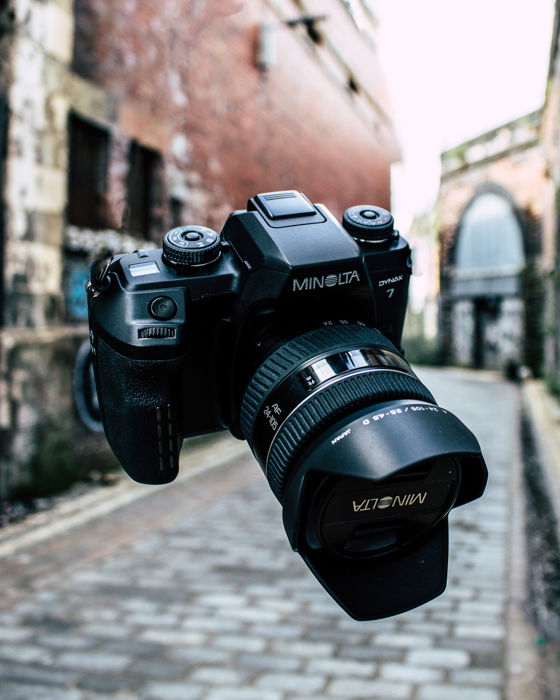
Photography Terms for Cameras
SLR
A Single-Lens Reflex is a camera with one lens, used for focusing, viewing and capturing.
SLRs use a mirror and a prism to reflect the light coming into the camera. This allows photographers to see through their viewfinder and see exactly what they are going to capture. The mirror flips up when the shutter is open to allow light to expose the film.
These are analog cameras, and they use film.
DSLR
DSLRs are Digital Single-Lens Reflex cameras. They work with the same mechanical system as SRLs, but instead of using a film, they capture the image digitally and store it on a memory card.
TLR
Twin-Lens Reflex. A vintage camera type.
TLR cameras have two separate lenses with the same focal length.
With the top one, you can focus and compose the scene. This is part of the viewfinder system. The viewfinder uses a mirror, a matte focusing screen, and a hood. The bottom lens is solely used to take the photograph.
These two are connected, so if an image appears sharp in the viewfinder, it is going to be sharp on the film too.

Medium Format Cameras
Medium format cameras use the 120 roll film. Digital medium format cameras have a digital sensor that mimics that size.
The exact film ratio for medium format is different for each brand or camera type. They all use the same film, but the amount of frames depends on the camera.
Medium format cameras are usually modular. This means you can interchange lenses, backs, viewfinders, grips, and more. Technically, Polaroid cameras are also medium-format.
Large Format Cameras
Large format cameras shoot on sheet film which can range from 4×5″ (10.16cm x 12.7cm) to 8×10″ (20.32 cm x 25.4cm).
You can capture greater details with a large format camera because it reaches the biggest possible resolution in analog photography.
These are great for architectural photography due to the manipulation of film and focus planes. Also perfect for environmental portraits, conceptual artworks, and studio photographs.

Mirrorless
Mirrorless camera systems are a fairly recent development in digital photography. By removing the mirror, cameras can be faster, lighter, and quieter.
This photography term means that you can no longer look through the lens optically when composing. Instead, an electronic viewfinder (EVF) and/or a digital screen is used.
The term generally refers to more advanced devices, MILCs. This abbreviation means Mirrorless Interchangeable Lens Camera.
Point-and-Shoot
A point-and-shoot camera is also known as a compact camera. They are small enough to fit in your pocket. Their sensors are small (starting at 1/2.7-inch (5.37 x 4.04 mm)).
The lens is not interchangeable, and automatic systems set the exposure and other options.

360° Camera
A 360° camera lets you record your scene in a full-circle panorama. You can create photographs and videos you can move around in.
CMOS
The complementary metal-oxide-semiconductor is a type of imaging sensor. It’s used in modern imaging systems, such as DSLRs and mirrorless cameras.
Compared to CCD, they operate at significantly lower voltages, consuming less power.
They were once considered an inferior technology. Today, they have been vastly improved and are the more common sensor type of the two.
CCD
A charge-coupled device is a semiconductor device.
CCDs differ from CMOS sensors in that their pixels cannot be accessed individually. The readout is thus time and energy-consuming. CCD cameras have to use the whole surface of their sensors.
In turn, advanced CCD technology tolerates low-light better than CMOS.
Full Frame
Full frame sensors have a size of 36x24mm. It’s originated from 35mm film size SLRs.
It offers high image quality and resolution and can handle low-lit scenes with less noise than smaller formats.
For more information, see our Full Frame vs Crop Sensor article.

APS-C
The Advanced Photo System type C is an image sensor format. It’s approximately equivalent in size to the Advanced Photo System “classic” negatives of 25.1×16.7 mm, with an aspect ratio of 3:2.
Comparing to the 35 mm format, this gives a lens a crop factor of 1.5-1.6x. This means that your 50mm lens is effectively an 80mm.
You can find these in manufacturers’ entry-level and midrange cameras.
APS-H
The Advanced Photo System type H is also an image sensor format, with a size between full-frame and APS-C. They give a crop factor of 1.3x, meaning your 50mm lens is effectively a 65mm. These were specifically used in the original Canon 1D line.
Micro Four Thirds
Micro Four Thirds (MFT or M4/3) can refer to a lens mount or a sensor format. The MFT mount was released by Olympus and Panasonic in 2008. Other manufacturers, such as DJI or Blackmagic also use it.
An MFT sensor measures 18 × 13.5 mm, with an aspect ratio of 4:3 and a crop factor of 2x.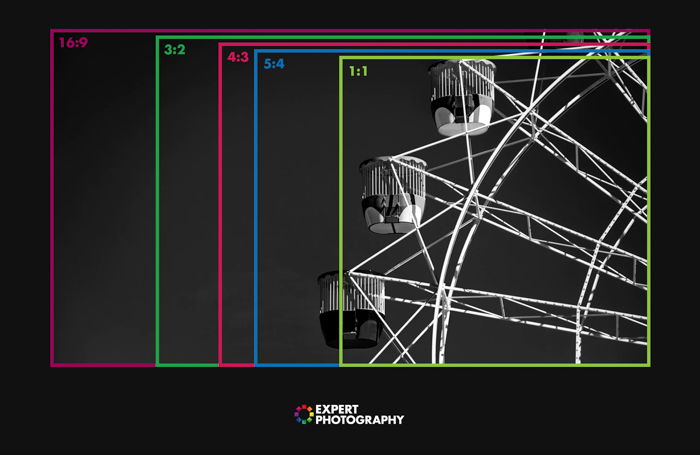
Viewfinder
A viewfinder is that part of the camera which you look in and see the image you are going to capture. It shows the field of view.
DSLRs use an optical viewfinder which allows photographers to see exactly what the lens sees.
As we took away the mirror from modern camera systems, we also lost a real view through the lens.
We did pick up an electronic feed through the lens, which you see via the LCD screen on the back of the camera. The sensor records what your lens sees and then a small electronic display is used to show in the small viewfinder window the picture. This way you don’t necessarily have to use the large LCD.
LCD
You’ll find the liquid-crystal display (LCD) screen at the back of your camera.
It shows you an electronic view of the scene or your captured images.
LCDs work by blocking the light. These are made of two polarised glasses, and between them, there is liquid crystal. These crystals turn due to electricity. Electricity can be changed at every point, this way the amount of light can be ruled.

Low-Pass Filter
A low-pass filter, also known as anti-aliasing or “blur” filter, eliminates the problem of moiré.
However, you have to be aware, that with this type of filter, more delicate details can get lost. This is why it’s missing from most of the professional cameras.
Dynamic Range
The dynamic range means the range of light intensities from the largest and smallest values in an image.
Sensors with a higher dynamic range offer more flexibility during shooting and also editing. They are also more expensive.
Resolution
Resolution is measured in pixels and megapixels.
An image that measures 5184×3456 pixels is equal to 17.9 MP. A higher resolution helps with cropping and larger printing. In terms of editing, it gives you room to play around.
You can have a great sensor, but image resolution depends on the lens you use. Sometimes it’s better to choose a cheaper camera and a more expensive lens, than an expensive camera with a cheap lens.
It will be handy to know what you get from your sensor but make sure to use the right lenses too.
Shutter
The shutter allows light to pass through the camera and hit the sensor for a determined period of time. There are certain types of shutter mechanisms such as leaf shutter, central shutter or electronic shutter.
Light Meter
A light meter measures the amount of light in a scene, determining the proper exposure. Light meters are built into cameras. They let the user determine which shutter speed, f-stop, and ISO to use.
There are two functions a light meter performs. Incident measures the light falling on a scene by using a lens covered with a white dome.
Reflected reads light bouncing off the subject.
There are also external light meters, which are essential if you’re shooting with large format systems.

Rangefinder
This measures the distance from the camera to a particular object. A rangefinder camera has a built-in rangefinder feature. This is a focusing mechanism, which can result in perfectly sharp images.
This way, the photographer can calculate the subject’s actual distance from the camera. Also, it allows us to see in advance, what’s going to go into the frame.
Metering Photography Terms
Matrix Metering
Matrix metering (Nikon), which is the same as Evaluative Metering (Canon), is a light metering mode. It determines the correct exposure with a special algorithm.
It looks at the scene you are photographing and separates it into different zones. These zones are then analyzed separately for light and dark tones. It counts the focal point as more important.
Center-Weighted Metering
When you don’t want to look at the whole scene for correct exposure, centre-weighted metering evaluates the light in the middle of the frame. It measures the light in the middle of the image with an intensity of 75% and with less intensity on the sides.
It doesn’t look at where you focus, as it assumes you are concentrating on the centre of the image.
Spot Metering
A type of light metering used to read reflected light in a concentrated area of any given scene.
It looks at where your focus is placed, and evaluates the light only in that area, ignoring everything else.
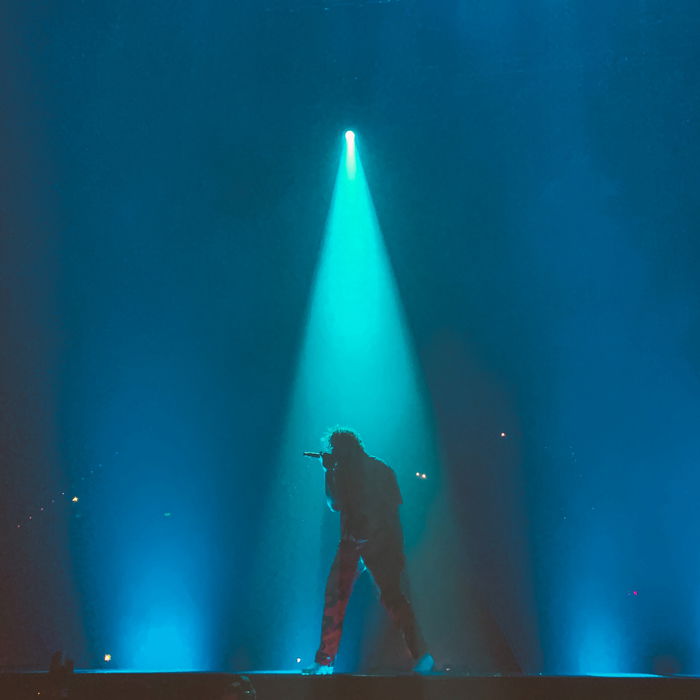
Photography Terms for Camera Settings
ISO
ISO means International Organization for Standardization and also refers to the sensitivity of the photographic film. Although, it is not a true acronym as this is not a direct reference to the organization. The union of the two film standards called ASA (American) and DIN (German) brought this name to a different perspective as the whole operation was under the auspices of the organization called ISO.
Later this phrase became more famous for its photographic aspect as they referred to ISO as film sensitivity after the event.
ISO became an important value in digital photography as most of the camera brands use this term to describe the brightness level and sensitivity in their DSLR’s.
Generally, a higher ISO allows you to photograph in low light conditions, but with a trade-off in quality.
Some modern cameras have the capacity to utilize a maximum ISO of up to 3,280,000 (although bringing along poor image quality).
Shutter Speed
The shutter speed or exposure time is the length of time the film plane or digital sensor is exposed to light. When a camera’s shutter is open, it captures the scene and creates a photograph.
Your camera usually displays it as a whole number, like ‘400’. These numbers here are fractions of a second (1/400th of a second, in this example). If shooting for longer than a second, it’s displayed as 1″ (or longer).
Shutter speed directly influences motion blur. At slow shutter speeds, the shutter will stay open longer, resulting in more visible blurring.

Aperture Priority
Aperture Priority, also known as A or Av, is a camera setting mode.
You can set the aperture as desired, shutter speed (and ISO, if set to auto) changes automatically.
Shutter Priority
Shutter Priority, also known as S or Tv is a camera setting mode. The user can set the shutter speed as desired, and aperture changes automatically.
Burst Mode
Burst mode is also known as continuous shooting mode. Sometimes you can meet the fps abbreviation, which means Frames Per Second.
This continuous shooting mode captures a number of photos in a fast sequence.
As far as photography terms go, you might only need to know about this if you’re capturing action, wildlife, or sports.
Exposure
Exposure is the quantity of light reaching a photographic film or digital sensor.
Exposure Value
‘Exposure value’ or EV, is a standardised measurement of exposure.
It’s a logarithmic scale, where lower values are darker, higher values are brighter. 0 EV is the luminance (brightness) of exposure at ISO 100, 1 second and f/1.0.
Any exposure setting that has the same luminance as this (for example, ISO 400, 1/2 second and f/1.4), will also be 0 EV.
1 EV is twice as bright, for instance, ISO 200, 1 second and f/1.0. Every next value is twice as high as the previous one.
EV is used as a relative measurement, too. One stop (1 EV) higher is double, one stop lower is half the brightness. So, when we say ‘3 EV lower’, we mean 8 times darker.
Exposure Compensation
Exposure Compensation allows you to alter the exposure from the value you select.
It’s usually a slider, going from -3 to +3, and will make your image darker or lighter.

White Balance
Every light source gives off a different temperature, which can be measured in Kelvin. The white balance is a camera setting that gives you the correct color in your image.
You can choose from different settings suitable for different conditions such as daylight, cloudy, etc. Later on, you can adjust this white balance when editing your pictures.
Focus: One-Shot AF
This focuses your camera for one subject once. This is great for subjects and photographers that don’t need to move.
Focus: AF Servo
In this focus setting, the camera will keep re-focusing your lens on a moving subject, as long as your finger is pressed half-way down on the shutter release.
Focus: AI Focus
This auto-focus method is a hybrid of the two previous modes.
It starts off in the one-shot mode, but if your subject moves, it tracks it, keeping the subject in focus.
Back Button Focus
Back button focusing is achieved by changing the button controls on your camera. This allows you to define a different button for focusing, other than the shutter release. On most cameras, there is a dedicated AF-ON button for this purpose.
This helps eliminates problems that arise from refocusing an already focused subject.
TTL
TTL stands for Through The Lens.
This flash mode is the same as the automatic mode on your camera. It uses the camera’s built-in metering system and measures the distance from the subject.
It’s also called TTL metering or TTL flash metering.
Bulb
Bulb allows you to keep the shutter open for the duration you keep the shutter release button pressed down.
This is best used with a remote shutter release.
It is very handy to know about when capturing long-exposures.
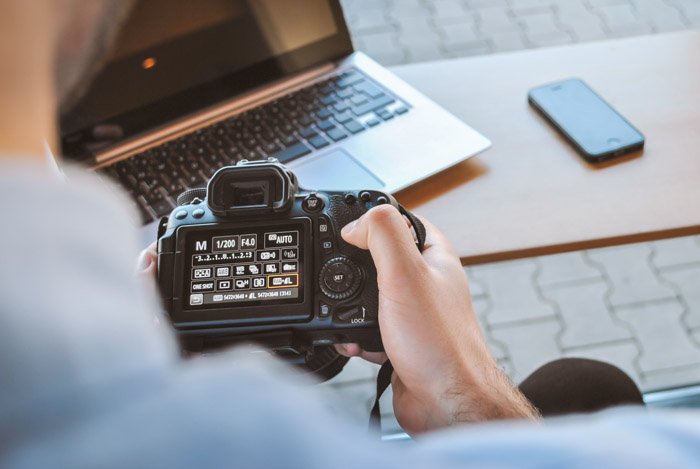
Photography Terms for Techniques
Forced Perspective
This is a photographic optical illusion. It is generally used to make two or more objects appear closer or farther away.
They can make the object or subject a different size than reality.
Depth of Field
Depth of Field is the area in your image where the objects or subjects are sharply in focus.
A large DoF will keep most of the image in focus, while a small one will show a very small area in focus. DoF is controlled by using the lens’ aperture.
Bokeh
Bokeh is Japanese for blur. It is the aesthetic quality of the blur produced in the out-of-focus parts of an image.
More bokeh is achieved by using wide apertures, longer focal lengths, or getting closer to the subject. Light appears in circles, because of the blade mechanism of the aperture.

Focus Stacking
Focus stacking is a common technique in macro photography. This technique requires multiple images, where different parts of the subject are in focus.
When stitched together, they will show the object with a full, overall focus.
Bracketing
Bracketing involves taking several shots of the same scene, using different camera settings. This is used for HDR images.
Flash Sync
Synchronizing the firing of a photographic flash with the opening of the shutter and curtain to expose the film or sensor.
Rules for Great Images
Sunny 16
On sunny days, at an aperture of f/16, your shutter speed is the inverse of your ISO value.
This means that if you are at f/16 and ISO 400, your shutter speed should be 1/400.

Snowy 22
If the sun is shining over a snowy landscape, at f/22 a balanced exposure is achieved using a shutter speed that is the inverse of your ISO.
ISO 400 will give you a shutter speed of 1/400.
This is only for calculation. You shouldn’t use either f/16 or f/22 unless you have a specific purpose with it. Apertures narrower than f/11 degrade image sharpness.
Overcast 8 (And f/11 and f/5.6 variants)
Use f/11 when the sky is variable, use f/8 in cloudy weather, but not really dark, and use f/5.6 for bad weather, such as rain.
Looney 11
In order to take breath-taking photos of the surface of the moon, use an f/11 aperture and shutter speed the same as the ISO.

Lighting Photography Terms
Kelvin
Kelvin is a measurement unit for temperature. In photography, it’s used for measuring color temperature. Different light sources have different color temperature. This determines the white balance, as our subjects will reflect the colour of the light they were in.
Daylight is around 5500 Kelvin, whereas fluorescent lighting is closer to 4000 Kelvin.
High-Key
High-key lighting is achieved by using a lot of light or whites in a photographed scene. This way you can eliminate dark tones and shadows from your image. High-key photos usually give a clean and positive impression and feeling.

Low-Key
Low-key lighting is achieved by using a lot of darker tones, shadows and blacks in a photographed scene. For this, you usually need a dark background and a light source which only highlights specific areas. This way you can keep your subject in the shadow and highlight some parts. Low-key photos are dramatic and mysterious.

Ambient Light
Ambient light is also referred to as available light or natural light. This is the light that naturally occurs in a scene, without adding a flash or light modifiers.
Main/Key Light
This is the main source of light for a photograph. It could be natural, such as the sun, or an off-camera flash unit.
Fill Light
The fill light is the secondary light source and used to fill in shadows created by the main light.
Lighting Pattern
A lighting pattern is a way light falls on the subject, where a specific pattern is created.

Reflector
A reflector is a piece of equipment, bouncing the light back into the scene without using an extra light.
The reflector tends to bring a softer light and is a cheaper option.
They can be from card or foam board, and not necessarily studio-grade.
Hard Light
This is harsh or undiffused light, coming from the sun or flash.
It produces hard shadows and well-defined edges, contrast and texture.
Soft Light
Soft light is diffused light, usually found on an overcast day.
It can be strong light filtered to cut down on its harshness.

Photography Definitions for Extra Equipment
Flash
It’s basically a light source that produces a flash of artificial light. It lights just for a short time (flashes), this is where its name is coming from.
This can be built into the camera or can sit on the camera via the hot shoe, or you can use it on a stand.
Flash is commonly used in studios and in low light conditions (for example at different events).
Remote Flash Trigger
A remote flash trigger connects the camera and the flash unit when the flash unit is off-camera.
This works using infra-red signals or a wire.
Strobe
A studio strobe is a flash unit that has lightning-fast recycle times. So strobes can flash fast many times in a row.
They also provide brighter and stronger light than a simple flash.
Hot Shoe
A hot shoe is a holding area for a flash or other device that allows a connection between the camera and the device.
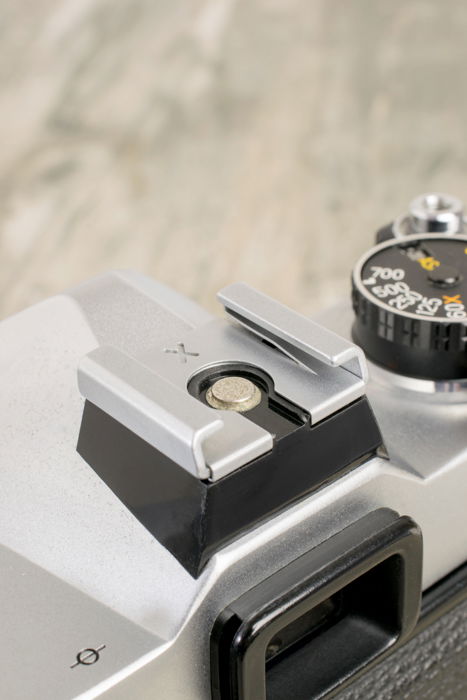
Cold Shoe
A cold shoe is a holding area for a flash or other device that doesn’t allow a connection between the camera and device.
Polarising Filter
A polarising filter is usually placed on the front element of the lens. It can help to eliminate reflections, stop glare and even darken skies.
Neutral Density Filter
A neutral density filter (ND Filter) limits the amount of light that hits the film or sensor. We use it on the front lens of a camera. A 1-stop ND filter will let only 50% of the light in, which means that you can set your camera for a 1 f-stop higher values.
They are perfect for shooting among really bright light conditions. They are also used for long exposures in the daytime.
Graduated Neutral Density Filter
A graduated neutral density filter is a neutral density filter, except that it’s graduated from the centre upwards.
This helps to darken specific parts of your scene, primarily the sky.

Remote Trigger
A remote trigger is a device that allows you to take a photograph without pressing the shutter release on your camera.
They can connect via wire or infra-red.
Grey Card
A grey card is a card with a color of 18% grey. Photographing this before any photographic shoot will help you ascertain a correct white balance from the light found in the scene.
Extension Tubes
Extension tubes are used to further extend the zoomable area of lenses in macro photography.
They come in x1, x2 and x3 options. A 100mm macro lens with the extension tube x3 turns your lens into the equivalent of a 300mm lens.
They sit between the camera body and the lens.
Teleconverter
A teleconverter is used to further extend the focal length of a telephoto lens. They come in x1, x2 and x3 options.
A 200mm telephoto lens with the teleconverter x3 turns your lens into the equivalent of a 600mm lens.
They sit between the camera body and the lens.
Photography Slang
Chimping
Chimping is constantly looking at your images on the LCD screen while missing perfect photographic opportunities.
Stopping Down
Stopping down translates to increasing the number of the f-stop. The higher the number, the smaller the aperture.
This reduces the amount of light entering the lens. This way you can avoid many kinds of light diffraction.
Opening Up
Opening up translates to decreasing the number of the f-stop. The lower the number, the larger the aperture.
By opening up, more light will enter the lens.
Flag/Gobo
A flag or Gobo is a piece of material that stops unwanted light from hitting part or all of your scene.
Especially common with fashion and product photography.
Shutter Lag
Shutter lag is the territory midway to setting the shutter off and capturing the image.
Glass
A common alternative name for a lens. Fast glass is a lens that can stop down to a ‘fast’ aperture, namely f/1.4 – f/2.8.
Blown Out
Overexposed areas in your image that have received an abundance of light are considered blown-out as all detail is missing.
SOOC
SOOC stands for Straight Out Of Camera, meaning an image that has received no editing or post-production.
Nifty-Fifty
A nifty-fifty is a 50mm standard lens with a maximum aperture of f/1.8 or larger.
Wide Open
Shooting wide open is using the aperture at its widest and fastest f-stop, usually f/1.4 – f/2.8.
Selfie
Photographing yourself.
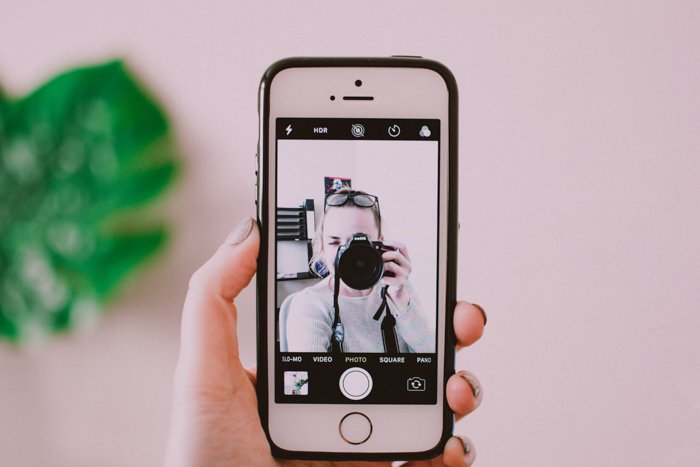
File Formats
Jpeg
Jpeg stands for Joint Photographic Experts Group. It’s a file extension for a lossy graphics file.
The Jpeg file extension is the same as Jpg.
RAW
Raw image files contain unprocessed pixel data, either uncompressed or minimally compressed. They offer extensive editability and flexibility. In turn, you always have to edit and tweak them, and then export them to another file format (usually Jpeg).
It can be upwards of five times bigger than a Jpeg image. They are often called digital negatives.
DNG
Abbreviation for “Digital Negative”. As a container file, it not only consists of the image itself. It also holds non-destructive editing information. Because of this, DNGs can be moved more easily, you don’t have search for their sidecar .xmp files.
DNG also offers more future compatibility than brand-specific raw files.
EXIF
Exchangeable Image File Format is a standard that specifies the formats for images, sound, and ancillary tags used by digital cameras.
This is where all of the image’s information is found, such as aperture, f-stop, and ISO.
TIFF
“Tagged Image File Format” is a file format. It’s flexible, allowing for a ton of different compression rates and algorithms, bit depths, and other variations. It can also contain layers that Photoshop and other editors can read. The size of a TIFF image can range anywhere from a few megabytes to multiple gigabytes.
TIFF is useful for printing as it doesn’t lose data during post-processing.
Photography Terms Used in Printing and Editing
CMYK
CMYK refers to the four inks used in colour printing: cyan, magenta, yellow, and key (black). CMYK is for substractive colour mixing.
RGB
The RGB color model is supplementary in nature. Red, green, and blue lights are, in different ways, mixed together to create a wide range of colors. RGB is used on screens as it operates with the colours of the light. These colours are added together to produce different colours (this is what is called additive colour mixing).
Metadata
Metadata is the additional information that describes (image) files.
Metadata tells you the author, the creation date, the camera device, and many more of a digital photograph.
EXIF data is also metadata.
Histogram
A histogram is a graphical representation of an image’s light levels. The shadows (blacks) are represented on the left side. Highlights (whites) are represented on the right side. In between these two are the mid-tones. These are neither completely black or white.
Understanding the histogram is important because the LCD on your camera doesn’t accurately shows what the image looks like. This can be also true for the displays you use for post-processing.
Histograms give you a mathematical representation of how well exposed an image is. So you don’t always have to rely on your vision, because this kind of data representation can help you too.

Pixel
Pixel means picture element, and every digital image is made up of them.
They are the smallest unit of image information.
DPI
Dots Per Inch is used for measuring the resolution of an image. It means the dot density found within an inch of an image both in print and on-screen.
WaterMark
A watermark is an identifying image or text, designed to protect photographers’ images from copyright theft.

Aspect Ratio
All photographic images have an aspect ratio. A square image used on Instagram has an aspect ratio of 1:1. But we have other standard ones such as 2:3, 4:5, 5:7 and 16:9. They came from film photography and filmmaking.
Crop
Crop or cropping refers to cutting away unwanted areas of a photograph or changing its aspect ratio.
Contrast
The difference between dark and light parts of a photo. A contrasty image has deep blacks and bright whites. A flat image has more balanced tones.
Their histograms show this, too. A high-contrast image has its midtones scooped, with peaks on both sides. A flat image has a bell-shaped histogram.
Midtones
The midtones refer to the tonal range found between the highlights (light areas) and shadows (dark areas).
Highlights
Lightest areas within an image which still contain details.
Shadows
Darkest areas within an image that still contain details.
Photography Terms for Problems
Underexposure
An image or part of an image that doesn’t receive sufficient light for proper exposures.
The image is dark, and often with a loss of detail and contrast.
Overexposure
An image or part of an image that receives too much light to be a proper exposure.
This often means a loss of detail and contrast, but the image is mostly light.
Chromatic Aberration
The effect produced by the refraction of different wavelengths of light through slightly different angles.
It results in a failure to focus and a colored halo around objects in the frame. It appears near to the highlights or brighter parts of the image or high-contrast edges.
Digital Noise
Digital noise refers to the grain found on images captured using a higher ISO. This lowers the quality of the images.
Camera Shake
Camera shake is the resulting blur found in images when you capture a scene without a tripod.
Hand movement is enough to cause a blur in the image, especially when using a shutter speed below 1/60.
Perspective Distortion
This photography term refers to the warping and distortion due to the relative scale of nearby and distant features.
The top of a building will fall away, as it is farthest away from the film plane or sensor. Also known as Parallax Error.
Wide-angle lenses can also foreshorten and distort the subjects.

Fringing
Fringing is the photography term for a purple “ghost” image on a photograph, apparent near contrasting edges. A type of chromatic aberration.
Moiré
Moiré occurs when a scene or an object contains repetitive details, such as lines, that exceed the sensor resolution.
As a result, the camera produces a strange-looking wavy pattern.
Red Eye
We call it red-eye effect when the eyes of the person you’re photographing mirror the light back at your camera.
This happens when using a flash at night and in dim lighting.
Vignetting
Vignetting refers to a ‘light fall-off’ and means the darkening of image corners, compared to the centre.
Lenses and/or using external tools such as filters and lens hoods cause these.
Lens Flare
Lens flare is where light is scattered or flared in a lens, due to bright light. This produces a sometimes undesirable effect.
Motion Blur
Motion blur blur occurs when the object is moving faster than your shutter speed can handle. This results in a blurred effect on the moving subject.
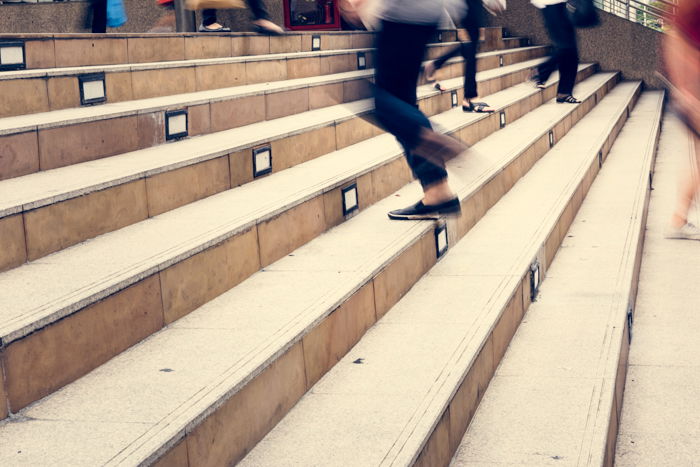
Conclusion
Here, we collected a lot of terms in connection with photography which you need to know.
This might be a lot to take in, but you can browse through it anytime you want.
As this list is non-exhaustive, if you are interested in photography, we recommend reading as much as possible. Also if you wish to know more of these terms, we recommend our other, deeper articles.

